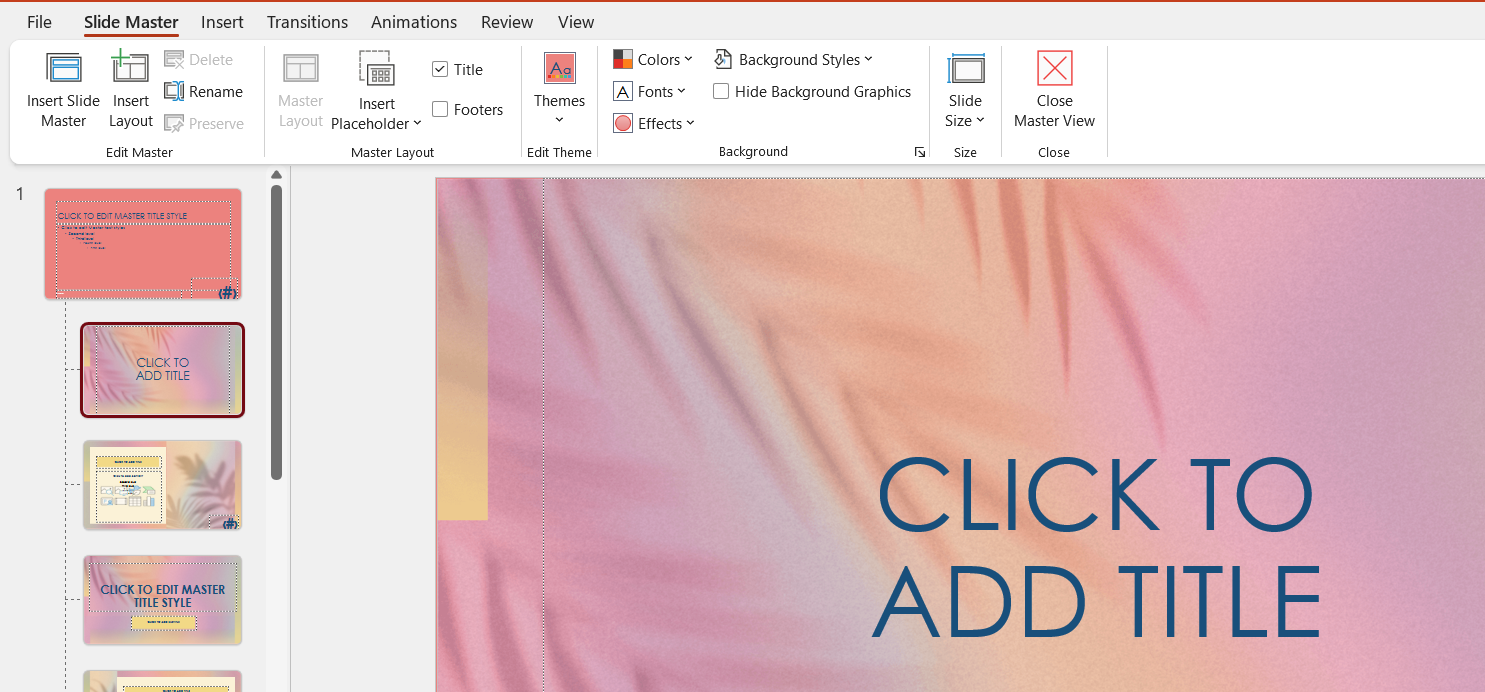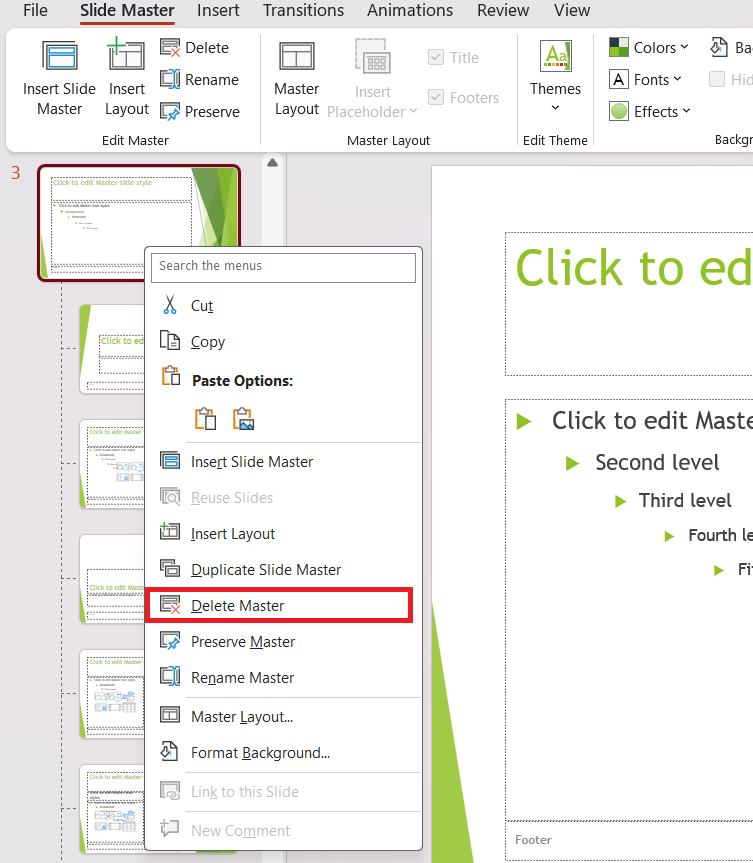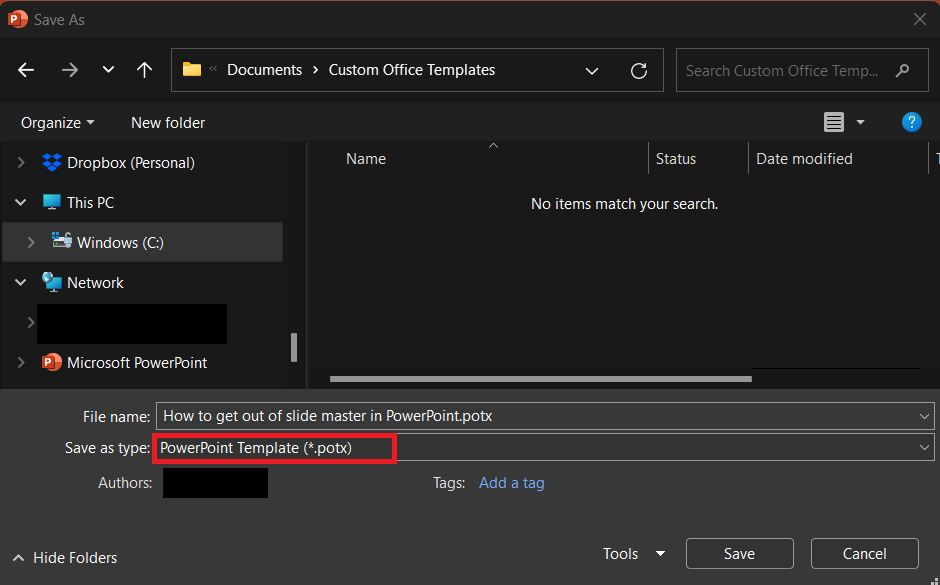Have you ever found yourself stuck in PowerPoint’s Slide Master view, wondering how to get back to your normal slides? Slide Master is a powerful tool for creating uniformity in your presentation, but once I’ve customized my layout, I usually want to get back to editing my individual slides. If you’re in the same boat, let me walk you through how to get out of Slide Master and return to your regular slide-editing view.
Key Takeaways:
- Exit Slide Master Easily: Click “Close Master View” on the Slide Master tab to return to normal editing, or simply press Esc for a quick exit.
- Preserve Important Masters: Mark necessary Slide Masters as “preserved” to prevent accidental deletion during clean-up.
- Customize for Consistency: Use Slide Master to create consistent slide layouts, themes, and formatting across all slides.
- Troubleshoot Layout Issues: Double-check that layouts are applied correctly and save changes to ensure designs appear as intended on individual slides.
- Reapply and Reuse: Save customized Slide Masters as templates for future presentations to maintain branding and design consistency.
Table of Contents
Stepping into Slide Master View
Understanding Slide Master in PowerPoint
Slide Master in PowerPoint is akin to having a backstage pass to your presentation’s design. It’s the control center where I can orchestrate the visual theme of the entire slideshow. From tweaking font styles to embedding company logos, Slide Master ensures every slide matches my set criteria.
This unspoken hero of PowerPoint is the blueprint for all slide layouts and the gatekeeper of presentation consistency.
Accessing Slide Master View for Customization
To start tailoring the slides to my needs, accessing Slide Master view is essential. I click the View tab and select Slide Master.
It’s like flipping a switch to see the scaffolding behind the scenes.
Once there, a world of customization opens up. I can add a new master slide, manipulate layouts, and apply themes. It’s crucial to remember that any alterations made in this view ripple across the entire presentation, making it a powerful tool to set a standard look and feel.
Why It’s Important to Exit Slide Master
When I’m in Slide Master, I edit templates that apply to every slide with that layout. This is great for making global changes, but if I try to edit specific slide content in this view, those edits might not work the way I want. For example, adding text in Slide Master can affect all slides, not just the one I’m working on. Exiting Slide Master is essential to avoid accidentally applying changes everywhere.
The Essentials of Managing Slide Masters
Preserving Crucial Slide Masters During Edits
When I’m working within the Slide Master, preserving certain slide masters becomes vital to avoid their accidental deletion. Should PowerPoint attempt to “clean house” and remove unused masters, I can prevent this by marking them as preserved.
By selecting a slide master and clicking the Preserve button on the Slide Master tab, I place a virtual pin next to the master, signaling PowerPoint to keep it intact.
It’s a simple but crucial step to ensure that the work poured into creating the perfect slide master isn’t lost.
Deleting Unwanted Slide Masters and Layouts
When it’s time to declutter the presentation, deleting unwanted slide masters and layouts is straightforward but should be done cautiously. I simply right-click on the slide master or layout thumbnail and select “Delete Master” or “Delete Layout,” respectively.
This cuts out any unnecessary designs. However, it’s paramount to first ensure none of my slides are using the layout I aim to remove. If they are, I replace the layout on those slides before attempting deletion. Otherwise, I could inadvertently strip part of the presentation of its formatting.
Navigating Away from Slide Mastery
The Simple Steps to Get out of Slide Master
Exiting Slide Master view is as smooth as making a PowerPoint transition. Once I’ve made all the necessary tweaks and am satisfied with the design, I find and click “Close Master View” on the Slide Master tab.
This action takes me back to the Normal view, allowing me to see my slides with all the changes applied. It’s a trick that anyone, from a first-time user to a seasoned presenter, can accomplish with a single click.
Common Pitfalls When Leaving Slide Master View
Even though exiting Slide Master view is straightforward, a few pitfalls await the unwary. One common mistake is inadvertently making broad changes to the master that affect unintended slides. It’s a reminder to double-check which layouts are applied to which slides before closing out.
Another slip-up is forgetting to save changes; unlike some modern apps, PowerPoint doesn’t always autosave, so I always hit save before exiting.
Lastly, closing the view without preserving necessary masters might result in losing some critical layouts which, once gone, could require a time-consuming fix.
Applying Your Edits Across Presentations
Ensuring Changes Reflect in Your Presentation
After investing effort into perfecting Slide Master layouts, making sure that every change reflected in the presentation is key. I immediately check my work by flipping through the slides in Normal view. If a placeholder isn’t where it should be, or a font hasn’t updated, I retrace my steps.
Sometimes, I need to reapply the layout to individual slides to kickstart the changes. It’s just a matter of selecting the slides, and then applying the layout anew from the Layout button under the Home tab.
Using Customized Layouts in New Presentations
My tailored slide master and layouts don’t have to be confined to a single presentation — I can use them as a template for future work. To do this, I save the presentation as a PowerPoint Template (.potx file).
When I start a new project, I simply choose my custom template and all the bespoke designs are there, ready to impart consistency and branding from the first slide onward. This practice is a time-saver for anyone creating series of presentations with a uniform look.
Troubleshooting Slide Master Issues
Solving Multiple Slide Master Conundrums
Facing multiple slide masters can be daunting, as it complicates my presentation and bloats the file size. To solve this puzzle, first, I identify which slide masters are being used by checking if any slides are linked to them.
Next, I ensure to transfer any slides relying on extraneous masters to the primary master layouts. Only then do I safely delete the surplus slide masters. This cleanup act will streamline the presentation, ensure design consistency, and make it much more manageable.
Maximizing Productivity with Shortcut Commands
Quick Keyboard Shortcuts for Slide Master Operations
For those of us who love efficiency, harnessing keyboard shortcuts is like having a superpower within PowerPoint. To speed things up in Slide Master view, I use shortcuts such as ‘Shift’ + click to select multiple objects, or ‘Ctrl’ + ‘S’ to quickly save my progress.
When it’s time to leave Slide Master view, pressing ‘Shift’ + ‘F5’ starts the slideshow from the current slide, which lets me preview changes instantly without having to navigate through menus.
Fast-Track Tips for Frequent Slide Master Users
For those of us who find ourselves frequently manipulating Slide Masters, streamlining our workflow is paramount. A tip to keep at our fingertips is to create and save a master slide deck with all possible layout variations. This becomes a universal template for any presentation.
Additionally, knowing the ins and outs of PowerPoint’s duplication and rename functions for layouts can save precious time. Another fast-track tactic is to use the format painter tool within Slide Master view to quickly copy formatting across multiple layouts.
FAQ: Swift Solutions to Slide Master Queries
How Can I Quickly Exit Slide Master View?
I can quickly exit Slide Master View by clicking on the “Close Master View” button located in the Slide Master tab. It’s a one-step process that takes me right back to the normal slide editing view.
What Is the Best Way to Remove Unused Slide Masters?
The best way to remove unused Slide Masters is to first ensure they are not applied to any slides, then right-click on the Slide Master in question, and select ‘Delete Master’. A methodical approach prevents accidental loss of formatting.
How Do I Apply My Slide Master Changes to Another Presentation?
To apply my Slide Master changes to another presentation, I save the current presentation as a theme or template. Then, in the new presentation, I apply this saved theme from the Design tab or open a new file from the saved template to inherit all the changes.
Can I Undo an Action in Slide Master View?
Yes, I can undo an action in Slide Master view by pressing ‘Ctrl’ + ‘Z’ on my keyboard or clicking the undo button in the Quick Access Toolbar. This reverts my last action, letting me correct mistakes effortlessly.
Why can’t I delete slide master in PowerPoint?
I can’t delete a slide master in PowerPoint if it’s currently in use by one or more slides. First, I’ll need to assign a different master or layout to those slides. Only then PowerPoint will permit me to delete the unwanted slide master.
John Michaloudis is a former accountant and finance analyst at General Electric, a Microsoft MVP since 2020, an Amazon #1 bestselling author of 4 Microsoft Excel books and teacher of Microsoft Excel & Office over at his flagship MyExcelOnline Academy Online Course.













